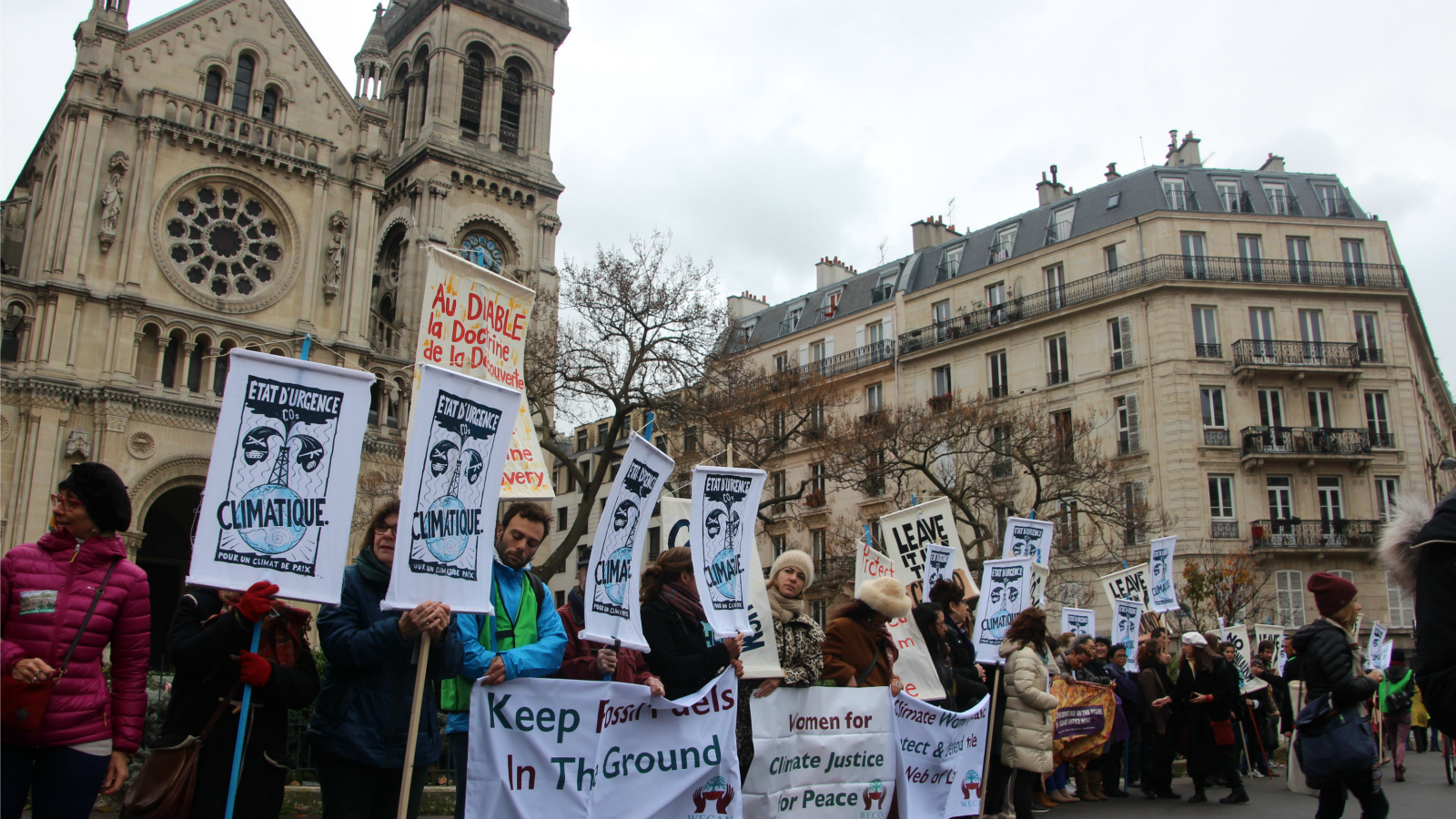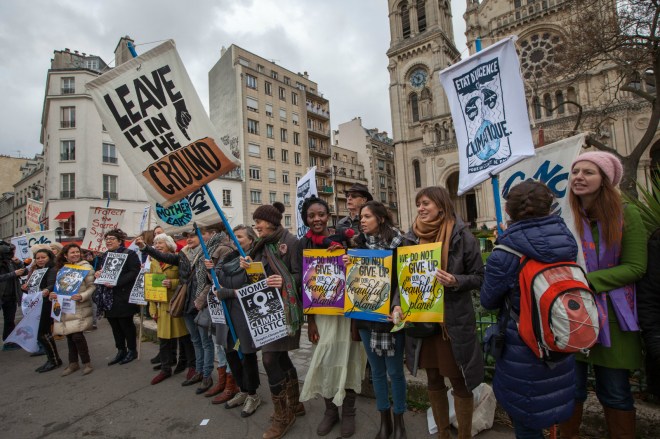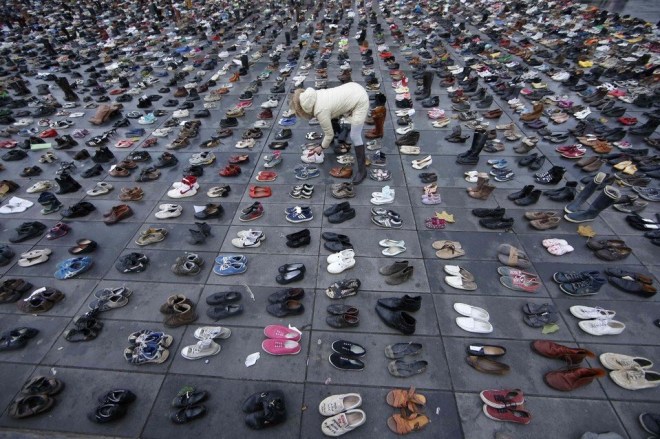PARIS, France — Massive rallies and marches are never easy affairs to manage. This is all the more true for the climate movement, which has sometimes found that acts of civil disobedience are essential to make governments take notice.
So the terrorist attacks in Paris, only two weeks before the the U.N. climate talks were set to begin in the same city, created an enormous hurdle for climate activists. The French government forbade any major gatherings from taking place, on the grounds that the police will be completely occupied guarding against terrorism and managing security for the COP 21 Climate Summit, which is bringing heads of state and foreign ministers from some 150 countries to the city. Even a stationary event in a stadium was not allowed.
But the coalition of progressive and environmental groups that had been working for months to plan COP-related events was determined to make some use of the enormous enthusiasm and energy that had been built up. So they went ahead with their plan to create a dramatic collection of posters, signs, and works of art to colorfully express their demands for a greener, human rights–based economic model. And they used them on Sunday in a human chain along a two-mile route through central Paris, made up of people standing still on public sidewalks — a compromise action that the police neither formally forbade nor allowed.

REUTERS/Benoit Tessier
The night before, activists were still putting the finishing touches on their work at an artist collective’s studio in the eastern Parisian suburb of Montreuil. The collective, Jardin d’Alice, lent the space to the climate activists in recent weeks to serve as an “atelier des possibles,” or “workshop of possibilities,” intended as a space where a brighter future can be imagined.
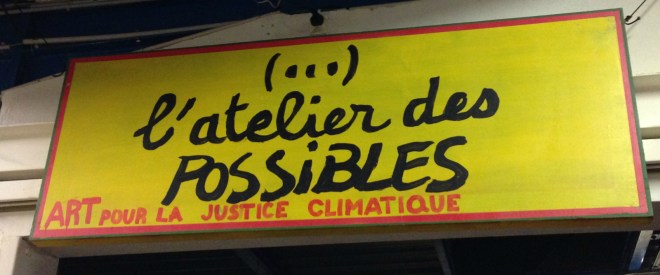
The neighborhood, near the end of a metro line, bears little resemblance to the Paris of Hollywood’s imagination. A real estate agent might call it “up-and-coming.” It feels like a French counterpart to the diverse, industrial, but increasingly hip and arty enclaves of U.S. cities, like Bushwick in Brooklyn. Elaborate graffiti murals cover many of the nearby buildings, and it is notably quieter than Paris’ more famous and centrally located neighborhoods.
But the art space was humming with activity reminiscent of Occupy Wall Street. Radical activists and artists lined up for the free food, sprawled on the couches, and sat on the front steps smoking hand-rolled cigarettes. The crowd skewed young and white, with many sporting dreadlocks, unkempt beards, or both. In the back, several people were at work on a multi-paneled mural depicting the nature-destroying capitalist machine in all its excesses. No one was looking at the display on a wall in the front room calling for civil disobedience. In the aftermath of the attacks, even most radicals seem to want to play by the rules.
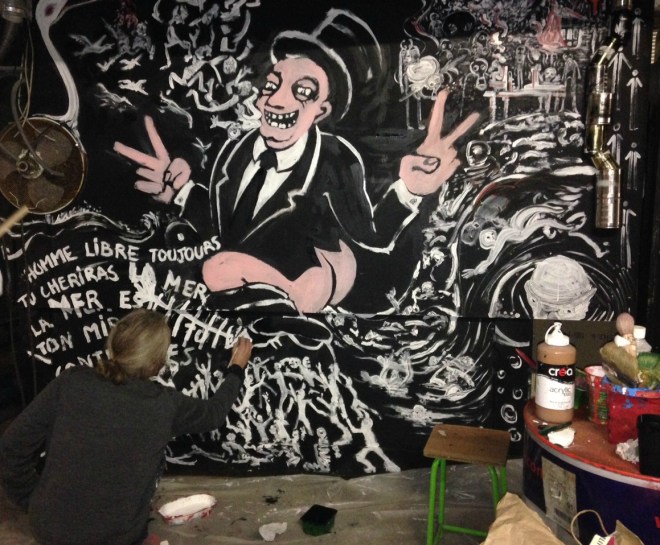
“We are trying to repurpose some of the art intended for the march,” said Axel Meunier, an arts organizer employed by activist group Avaaz for the COP efforts. The anti-capitalist mural was too big for Sunday’s human chain, but they hope to get it displayed at an arts space in Paris during the conference. On the floor were stacks of brightly colored posters and signs, including green tree leaves that could be worn on one’s back like a pair of angel wings. “We want to be mobile, so a lot of things are wearable,” explained Meunier.
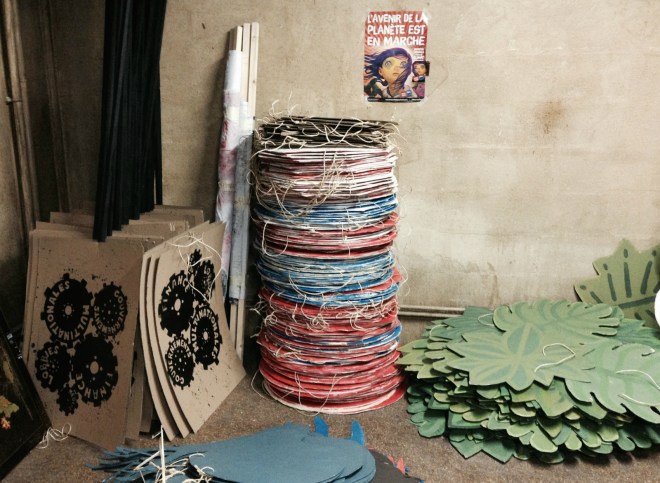
Each pile of art pieces corresponded to a different “chapter” of participants. Some people represented nature, carrying blue or white pieces of cardboard shaped like waves or clouds. Others, in a chapter representing natured-themed solutions, had signs with more literal language, such as “We need more organic farming” and “We need to replant.”
On Sunday the human chain came together — 10,000 strong according to 350.org, which was part of the organizing coalition — along Boulevard Voltaire between two major public squares, Place de la République and Place de la Nation. While the activists at the art space on Saturday night were a somewhat homogenous crowd, the participants in the chain came from a diverse array of interest groups and countries.

Along the route, they stood in a line in front of the buildings, holding their signs outward for passersby to see. They were nominally stationary, although they kept moving back and forth at the instruction of various organizers. Periodically bands of them would walk or bike through the adjacent bike lane singing or chanting, usually in French. Still, they did not block traffic and there was virtually no visible police presence. The whole affair almost blended in with the boulevard’s regular urban bustle.
Place de la République, at the northern end of the human chain, features the massive copper statue of Marianne, a symbolic figure of the French republic, surrounded by symbols of its founding principles of liberty, equality, and brotherhood. Currently, the base is covered in candles and French flags commemorating the recent terrorist attacks.
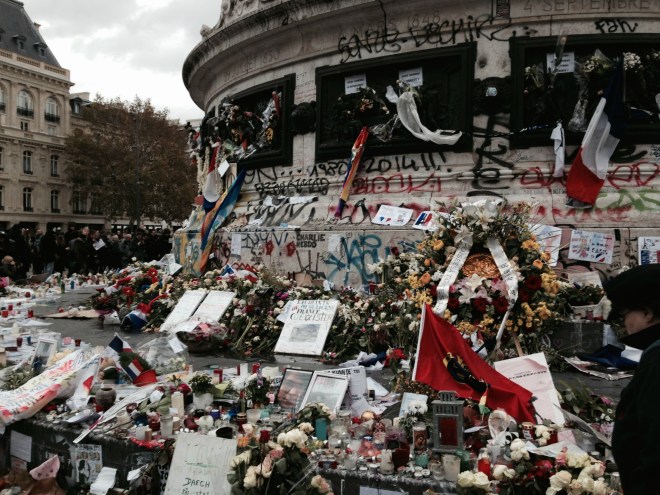
On Sunday, Place de la République also featured hundreds of shoes laid out by activists, some with notes and artwork, to represent people who had planned to participate in the march.
At one point, the human chain passed right in front of Le Bataclan, one of the sites where the terrorists struck by entering a concert and firing on the crowd. The sidewalk in front of the building and along a small park across the street is covered in memorial notes and flowers.
Indigenous people were especially prominent in the human chain, as they have been at other major climate marches. The Indigenous Environmental Network also held a traditional healing ceremony at Place de la République earlier Sunday morning to honor the memory of the victims of the recent attacks and to call for healing the Earth. They came from as far away as New Zealand, the Marshall Islands, and Samoa. Two indigenous activists from the U.S. who had attended that morning’s event were in the human chain holding a banner saying, “Respect Indigenous Peoples Rights.”
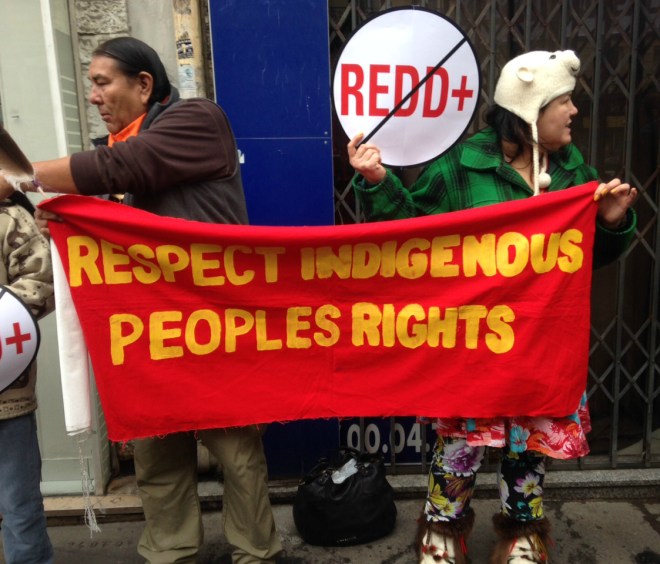
“Indigenous peoples from the Arctic region in the north to Latin America, Africa, and Southeast Asia are one of the most vulnerable populations,” said Tom Goldtooth, a Native American activist from Minnesota. “We are experiencing a changing climate that affects our right to practice our culture, our religions, and the effect of extractive industries operating in our backyard.” Goldtooth points to issues like the cancer clusters among Canadian First Nations near the Alberta tar sands as emblematic of how the fossil fuel economy assaults indigenous communities. The Indigenous Environmental Network will be present for the next two weeks here, holding events inside and outside the COP to demand strong language protecting indigenous rights in the agreement. Goldtooth emphasizes that it must be not just in the preamble but in the operational text as well.
At the conclusion of the human chain’s formal gathering, around 1:00 pm, organizers expressed optimism that the seamless execution would create space for more outside activism during COP. France is currently under a state of emergency which grants the government broad powers. It had even preemptively placed some climate activists under house arrest.
Unfortunately, over an hour later, at Place de la République, another group of protesters focused on anti-capitalist messages, some wearing masks and bandanas over parts of their faces, massed in the square and surrounding streets and refused to disperse. According to The Telegraph, they were chanting, “State of emergency, police state, you will not deprive us of our right to demonstrate.” Some threw objects at the police, who were nearby in riot gear. The cops then sprayed tear gas and arrested nearly 300 of them. 350.org described them in a statement as “a small group of protesters unaffiliated with the climate movement,” who were “violating the nonviolent pledge that every group involved in the climate coalition here in France has agreed to.” It remains to be seen how this will affect the ability of climate activists to organize events over the next two weeks.
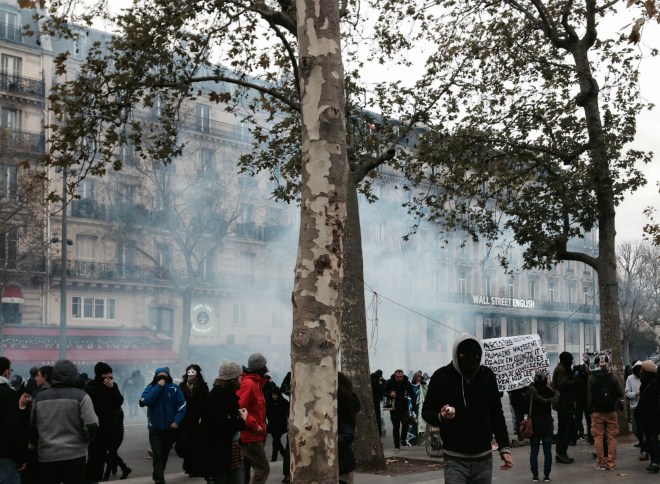
A cloud of tear gas hovers over Place de la République.

